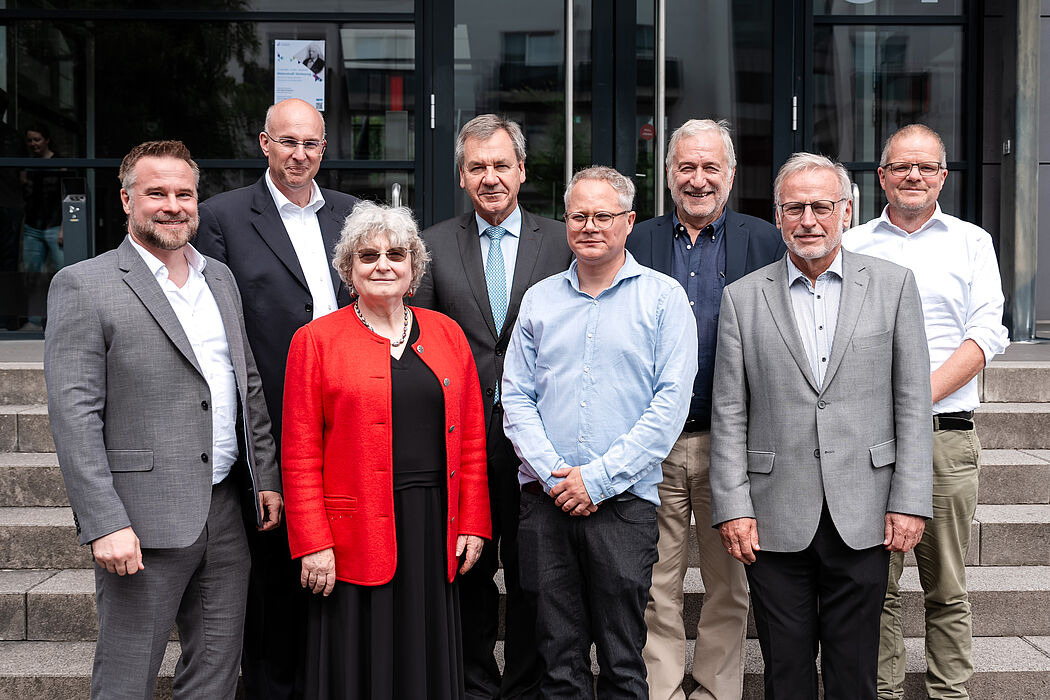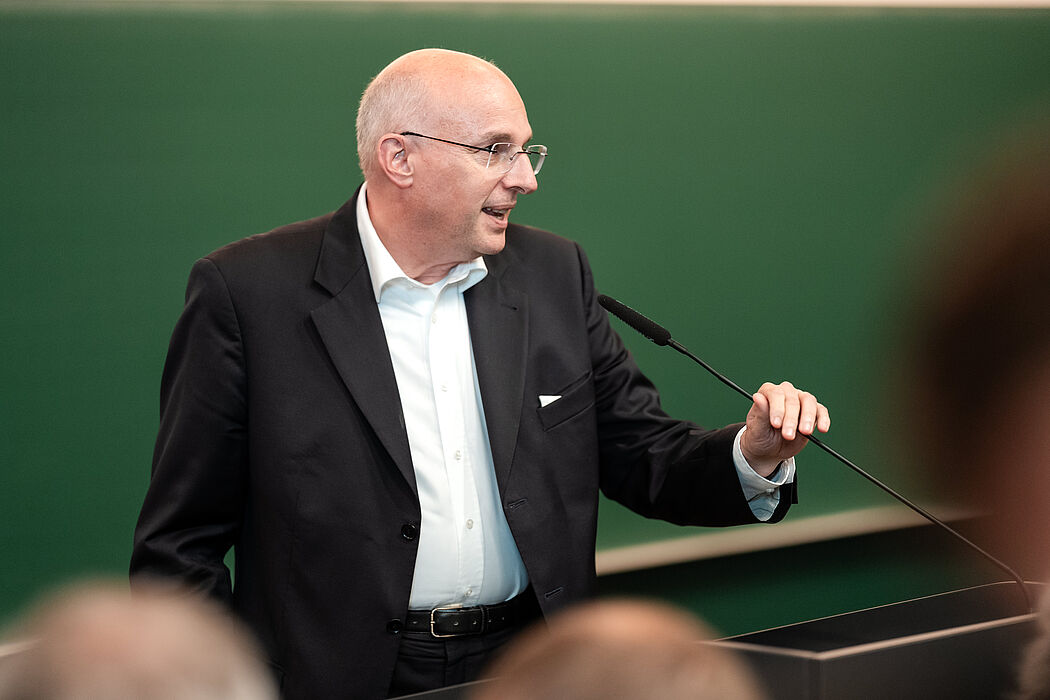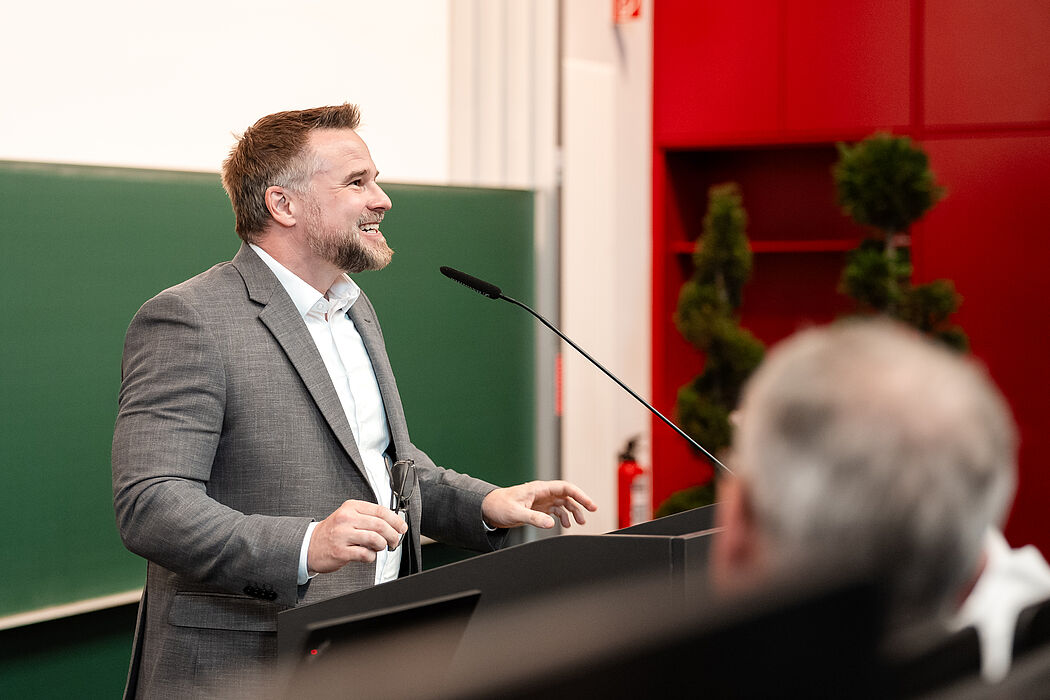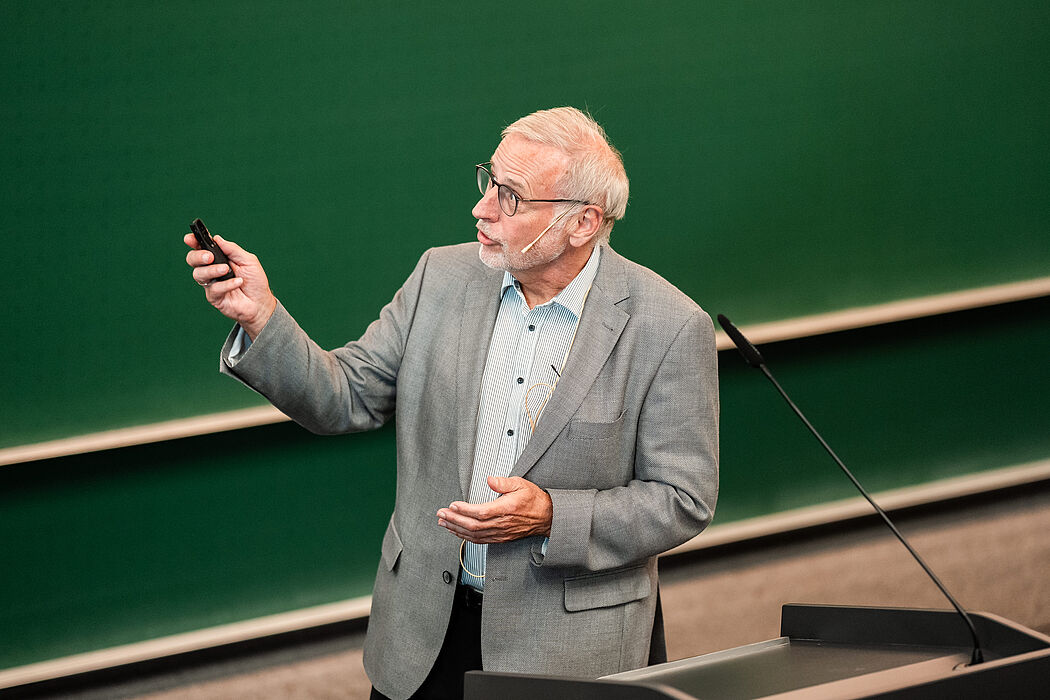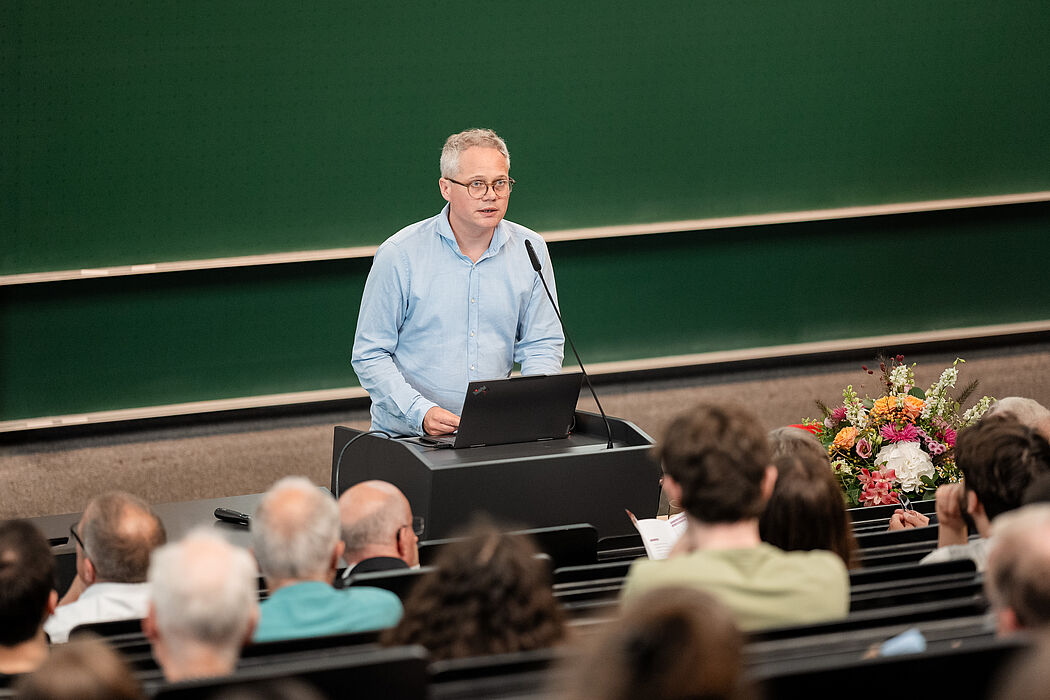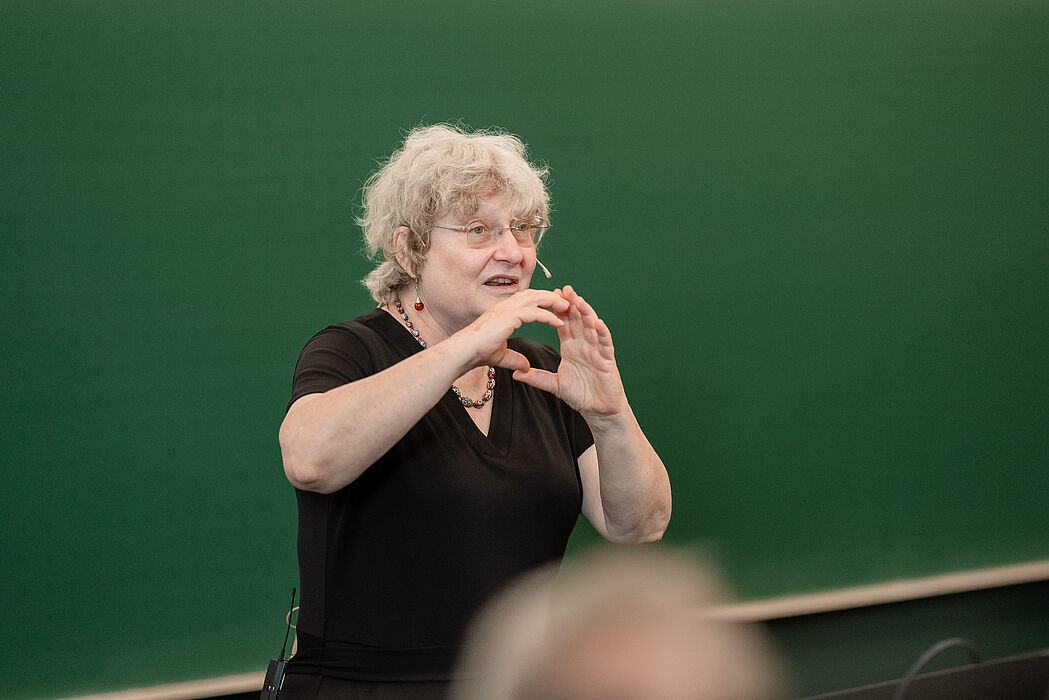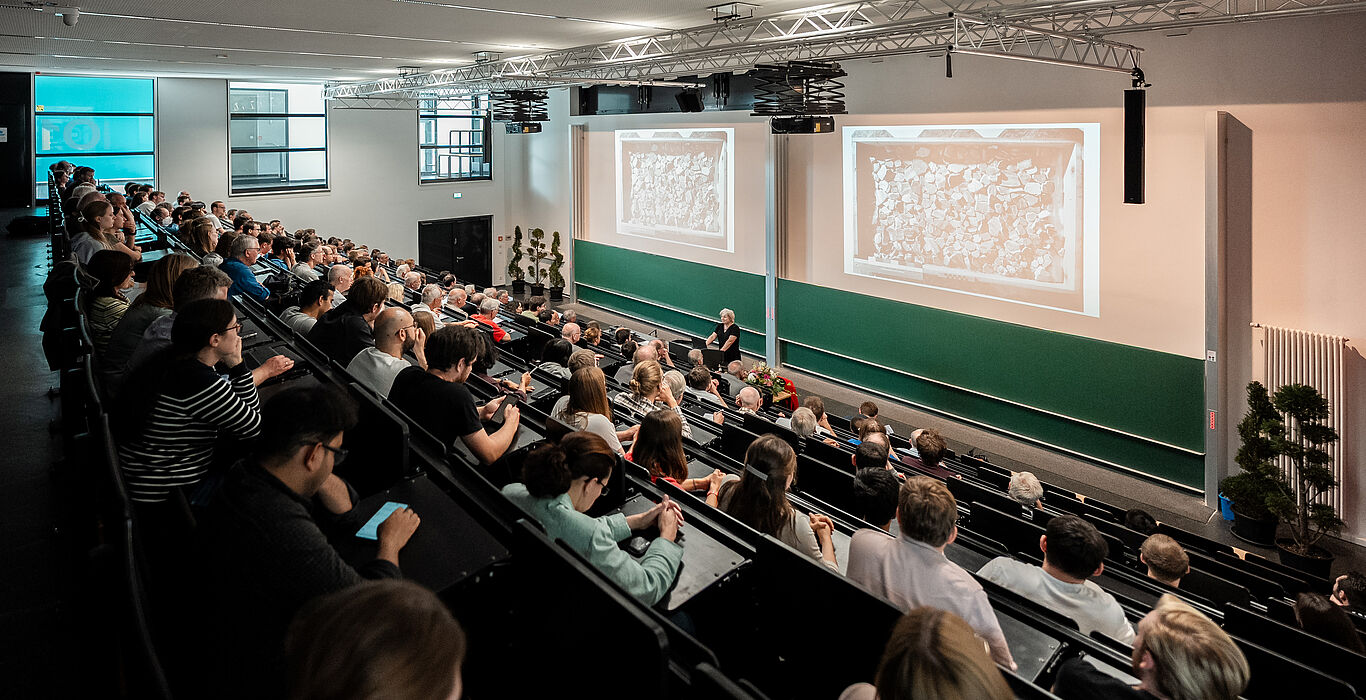The multi-award-winning mathematician Prof. Dr. Ingrid Daubechies from Duke University (USA) was the first woman to give the traditional keynote lecture at this year's Weierstrass Lecture on Friday, 11 July. In her lecture, Prof Daubechies focused on how mathematicians can support art historians and conservators in the restoration of pictorial artefacts.
Prof Dr Jürgen Klüners, Dean of the Faculty of Computer Science, Electrical Engineering and Mathematics, welcomed those present to the packed lecture theatre O1 and explained the importance of the Weierstrass Lecture. The lecture, which has been held annually since 2011, is named after Karl Weierstrass (1815-1897), who graduated from the Theodorianum grammar school in Paderborn in 1834 as the school's best graduate. He is one of the most important mathematicians of the 19th century and is considered the founder of modern analysis, among other things.
In his welcoming address, Prof. Dr. Matthias Bauer, President of Paderborn University, emphasised the "outstanding reputation of the Weierstrass Lecture, which is known far beyond the borders of Paderborn". He emphasised that findings from the keynote speaker's research not only accompanied him in his scientific work as a chemist, but also solved central problems.
In his historical lecture, Prof Dr Volker Peckhaus, Emeritus Professor of Philosophy of Science and Philosophy of Technology at Paderborn University, built a bridge between philosophy and mathematics. Among other things, he addressed two so-called "foundational crises" in Greek and modern mathematics as well as some paradoxes that link the two scientific disciplines.
Prof. Dr. Martin Kolb, Professor of Stochastics at Paderborn University and co-organiser of the lecture, introduced the keynote speech. He praised the keynote speaker as an "outstanding mathematician with fundamental contributions to applied mathematics", who has had a great influence not only on mathematics but also on other scientific disciplines. Prof Daubechies is best known for her wavelet research, which has fundamentally changed modern signal and image processing. She has received numerous awards for her work, including this year's US National Medal of Science. In her Weierstrass lecture, Prof Daubechies explained how destroyed works of art can be reassembled. In this way, missing elements can be precisely determined with minimal variation using her scientific calculations.
Note: The event was held in English, the quotes were translated accordingly.
This text was translated automatically.

